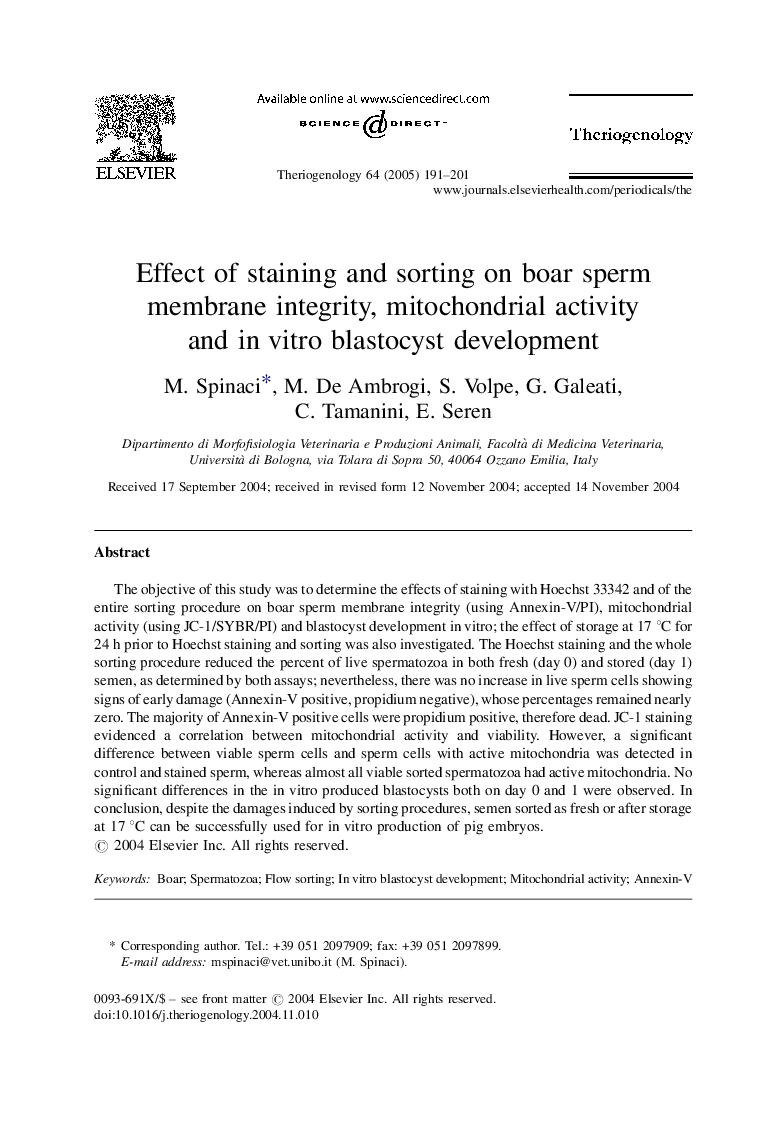| Article ID | Journal | Published Year | Pages | File Type |
|---|---|---|---|---|
| 10893938 | Theriogenology | 2005 | 11 Pages |
Abstract
The objective of this study was to determine the effects of staining with Hoechst 33342 and of the entire sorting procedure on boar sperm membrane integrity (using Annexin-V/PI), mitochondrial activity (using JC-1/SYBR/PI) and blastocyst development in vitro; the effect of storage at 17 °C for 24 h prior to Hoechst staining and sorting was also investigated. The Hoechst staining and the whole sorting procedure reduced the percent of live spermatozoa in both fresh (day 0) and stored (day 1) semen, as determined by both assays; nevertheless, there was no increase in live sperm cells showing signs of early damage (Annexin-V positive, propidium negative), whose percentages remained nearly zero. The majority of Annexin-V positive cells were propidium positive, therefore dead. JC-1 staining evidenced a correlation between mitochondrial activity and viability. However, a significant difference between viable sperm cells and sperm cells with active mitochondria was detected in control and stained sperm, whereas almost all viable sorted spermatozoa had active mitochondria. No significant differences in the in vitro produced blastocysts both on day 0 and 1 were observed. In conclusion, despite the damages induced by sorting procedures, semen sorted as fresh or after storage at 17 °C can be successfully used for in vitro production of pig embryos.
Related Topics
Life Sciences
Agricultural and Biological Sciences
Animal Science and Zoology
Authors
M. Spinaci, M. De Ambrogi, S. Volpe, G. Galeati, C. Tamanini, E. Seren,
